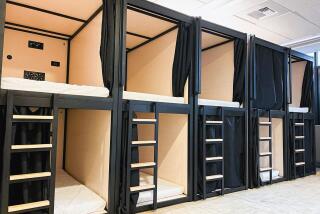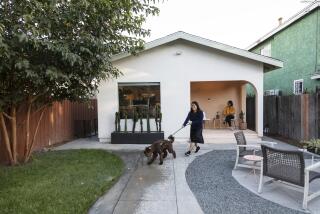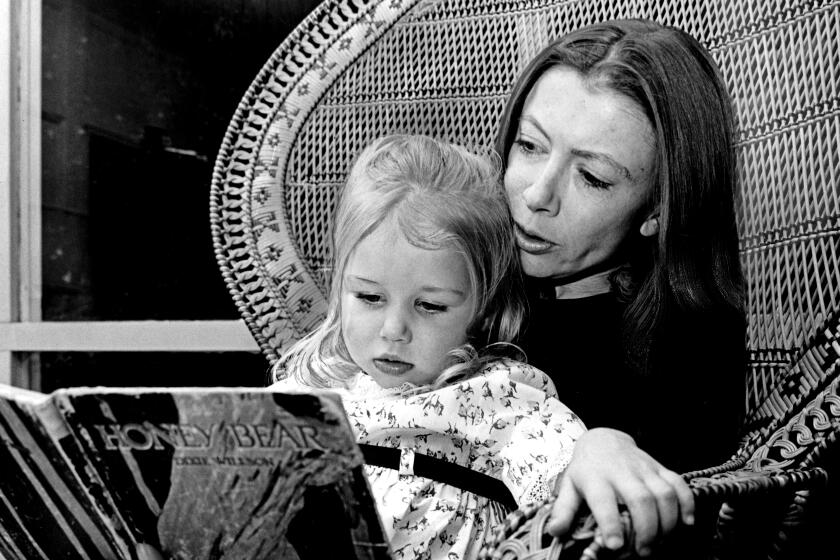‘Reinventing the Chicken Coop’: DIY shelters for modern nesting
- Share via
When Bay Area designers Kevin McElroy and Matthew Wolpe of Just Fine Design/Build unveiled their mod chicken coop Chick-in-a-Box at a 2010 Maker Faire, they thought they were on to something. Chickens had moved from the farm to the backyard, after all, and coops had become popular design fodder for architects and artisans alike.
But McElroy and Wolpe found little interest in their $1,200 handmade chicken coop, regardless of its post-and-beam-style composition or striking butterfly roof that doubles as a water catchment system. Because of the abundance of prefab chicken coop kits online, Wolpe said, their coop was seen as a luxury item.
Chick-in-a-Box, however, was the catalyst for something else: a fun DIY book, “Reinventing the Chicken Coop,” published this month by Storey. It shows readers how to design and build chicken coops in a variety of styles.
The book features 14 designs by several designers including McElroy, 33, a graduate student in Stanford’s industrial design program, and Wolpe, 29, who works in the fabrication shop at UC Berkeley’s architecture school and teaches furniture design.
The chicken coops include a log cabin, an A-frame, a Midcentury Modern design and a rustic structure.
“We wanted the book to appeal to a broad range of people,” Wolpe said. “There is a new demographic tending chickens -- urban people with tastes rooted in certain traditions of architecture.”
Unlike a lot of DIY books that condense detailed projects into a page or two, “Reinventing the Chicken Coop” lays out each project in a dozen or so pages with material lists, illustrations and assembly instructions.
Wolpe said he and McElroy consulted several how-to books and met with technical writers in an effort to relay complex building instructions as easily as possible.
“We wanted the drawings to do most of the talking with the text as a reference,” Wolfe said.
Their care shows. The book is easy to read, and illustrations offer insight into egg access doors, cantilevered nesting boxes, worm compost bins and rooftop vegetable gardens. One coop, made of shipping pallets, even has a chalkboard to keep track of egg production.
“Chickens are a symbol of the local food movement,” Wolpe said in explaining their surging popularity. “We wanted to design chicken coops that would make a statement and that people would be proud of.”
lisa.boone@latimes.com
More to Read
Sign up for our Book Club newsletter
Get the latest news, events and more from the Los Angeles Times Book Club, and help us get L.A. reading and talking.
You may occasionally receive promotional content from the Los Angeles Times.











